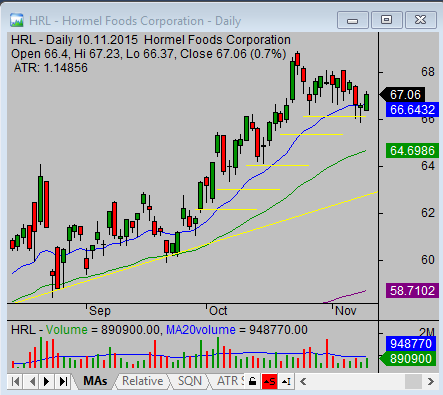There are many stock trading terms you can find on this, my (best) online educational site. And also on other good online sites for traders. There is plenty of information that could be found and read during your process to learn online stock market trading.
Such education provides a really lot of stock market terms that could sometimes be overwhelming for anyone who is in the process of training to learn how to trade equity markets. There are many stock trading terms that must be learned to understand the basics of equity markets, how to analyze shares, sectors and major indexes, how to pick best stocks to buy or sell and also how to manage your trades.
Passive management of your trades
Trade management techniques are an important part of equity market terminology for every type of trade. Every individual position in your broker account or in your investment portfolio should be managed. You must take care of them during the process, from opening of the trade until closing of any individual position.
If you are a beginner stock or ETF trader you could prefer to be more passive in trade management terms. It can make your first days or months of live trading easier. Define what you will decide about the trade management process only after stocks market close and avoid distractions by live price development during the day. Set your stop loss order and your profit taking order during the first minutes of exchange opening hours.
Active management of trades
When you begin to be a more experienced equity trader or active investor you can start to be active in trade management during a trading day as well. You can define your regular intra-day routine that you will follow and manage your trades. You can define regular times when you will check quotes and charts in your online broker platform and decide what you could do. You define your own terms of management.
You can also incorporate usage of alerts in your broker platform that could help you in your online securities trades. They can provide you alerts if a share price moves into an area where some action is needed based on your trade management rules. Such trade management terms should be precisely defined in your business plan for your online trades and investments system.

Trailing stop trade management example
It is also very good to use the time just before equity markets close to do regular analysis of price charts. It could help you to decide to close a trade before any of your target or stop loss levels are hit. If some broad market signals indicate strong trend reversal, then it could be wise to close most of your positions and wait for further development of share price quotes during the next sessions.
Multiple time frames on technical analysis charts
There is a common mistake of traders and investors that accompanies stock chart time-frames. Beginners focus on to a single time frame very often and forget to monitor other chart time frames – mostly higher time frames. They miss these important terms in their plan.
Many daytraders focus solely on 5-minute or 15-minute charts and do not check technical analysis charts with 4-hour or daily timeframe. It is important to include higher timeframes into stock market analysis software and also learn how to analyze these time frames during your technical analysis training.
Timeframes are critical for good results of your online securities trading, as they can help to identify two most important stock trading terms of technical charts – the support and the resistance levels.
Find more on related pages
- Collect the best stock trading books
- Inspire by lessons provided by stock market history chart
- Find more about education for traders